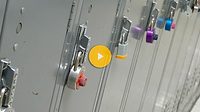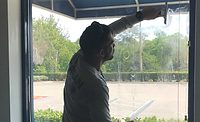There’s hardly a business in the world that hasn’t faced challenges with remote work during the pandemic, but the issues that universities and K-12 districts have faced have been unique. With students and teachers requiring access to resources for academic continuity, schools have also needed to examine their security practices for remote access. According to a recent report, 2020 was a “record-breaking” year for cybersecurity issues at the K-12 level, with many incidents leading to school closures, millions of dollars in stolen taxpayer money and student data breaches linked to identity theft and credit fraud. Colleges and universities experienced a similar spike, with ransomware attacks doubling from 2019 to 2020 – all while schools report a potential cut to IT budgets.
The result is a wakeup call for the education sector: it’s time to be more targeted and efficient about secure remote access to school resources while also continuing to provide connections to the tools and software that universities and K-12 districts have invested in and that are critical for students to utilize. The security challenges involved with remote student access, coupled with a need for a user-friendly solution that allows students, faculty and staff to utilize resources when off campus, mean that school and university IT departments must consider a number of elements when evaluating the security of their remote access solutions.
Conserve resources through pooled desktops and policies
Where some organizations can provide one-to-one access to remote desktops, students and faculty are more likely to need different resources depending on the class they are in. Software, particularly for students in art, design and engineering programs, is expensive to license, and often too resource-intensive to run on a personal computer.
By finding a solution that allows for pooling desktops and allocating machines based on policies, schools are able to make resources available to students dynamically. The goal is to define policies to help better utilize the resources. For example, if a desktop goes idle, it times out and is released back to the pool for another student to use. This is both more efficient and more secure when you consider the centralized control and monitoring associated with managing dynamic pools of desktops.
Ensure that log-in is user-friendly...
Many remote access solutions rely on VPN, but this can be costly, resource-intensive, and cumbersome for the end user. When managing a user base consisting of thousands of different people, it’s essential to ensure that it’s easy for each person to log in remotely through a sleek, simplified interface. Evaluate any solution not just from the IT side, but also from the user side. Think about the potential problems that can come up – and the drain they could turn into for your help desk – before making a decision regarding the login workflow.
Secure with multi-factor authentication and Zero Trust support
The hard work of security can take place out of sight for the user, with multi-factor authentication and Zero Trust support. Ensure any solution you are bringing on has this type of security integrated so it does not become a headache down the road. Audit-level tracking is another way to ensure security. This allows you to always know who’s using what from where and for how long, so you can monitor trends in user behavior and look for outliers that may indicate a security breach.
Provide multiple levels of access
In a large organization like a school district or university, it’s important to support tiered access controls. Look for solutions that allow you to assign role-based access to the tools that manage your remote access environment. For example, your tech support help desk might be able to access some features, but the IT administrators have full control. This helps to limit the potential security risks, even when a large number of IT employees are managing the system.
Consider student onboarding
For both ease of use and security, you’ll want to ensure that student onboarding is as simplified as possible. Many universities continue to manually onboard students, but you can also integrate with directory sources like Active Directory in order to give students access to the proper resources automatically. By ensuring that students only access the resources they need, you increase the overall security of your organization.
Support a wide array of devices
Schools, colleges and universities are unique in the sense that students often bring their own devices, unlike what they might do with an employer – and your security needs to adapt to all of them. Ensure that whatever remote access solution you choose enables students to choose between a Mac and a PC while maintaining security and accessibility standards. Take into consideration solutions that require students to install software on their devices or that allow students to redirect USB devices to their hosted resource. These aspects present both maintenance and security challenges for IT administrators.
In fact, flexibility will be key in making choices for remote access, because technology will continue to change and it’s essential that your remote access solution does not limit your ability to switch to newer and possibly more affordable options in the future.



